Common names: osprey, bald buzzard, fish hawk
Scientific name: Pandion haliaetus
Family: Pandionidae (ospreys)
Habitat: Scottish lochs, lakes and reservoirs, estuaries
Diet: fish
Predators: none
Origin: native
Expert fisherman and a conservation success story. Back from the brink of extinction, the mighty osprey is breeding once again in every country of the UK.
Common names: osprey, bald buzzard, fish hawk
Scientific name: Pandion haliaetus
Family: Pandionidae (ospreys)
Habitat: Scottish lochs, lakes and reservoirs, estuaries
Diet: fish
Predators: none
Origin: native
Ospreys have a predominantly white head with dark brown bands across the eyes and varying patterns of brown feathering on the crown. The chest is mainly white, but it sometimes features a ‘necklace’ of darker feathering that is more prominent in females.
The topside of the wings are dark brown. Underneath they are mottled white and brown with a dark patch on the 'wrist' where they bend. The wings are angled and very long, spanning 158cm.
Their feet have long, curved talons and short spines covering the underside of the toes to help grip wet prey.
Like most birds of prey, the female is larger than the male.
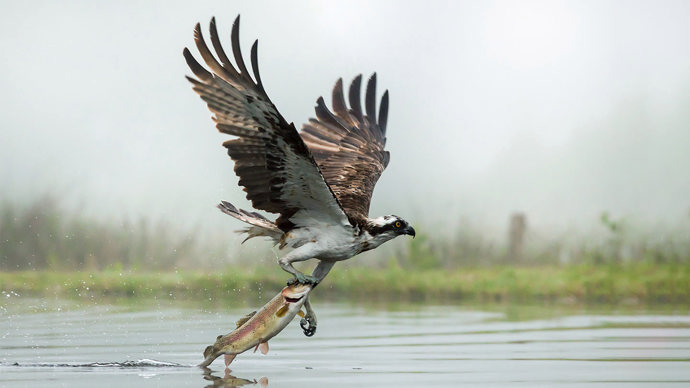
Credit: Ann and Steve Toon / naturepl.com
The osprey eats medium-sized fish such as salmon, trout, flounder and mullet. It will fly up to 70 metres above the water’s surface to scout for its prey, and once it has spotted a fish, the osprey plunge-dives towards its catch with wings half folded. As it reaches the water, it throws its feet forward to snare the fish in its talons. Ospreys have been known to dive up to one metre below the surface of the water to catch prey.
Ospreys can close their nostrils to stop water getting in when they dive.
The monogamous osprey first breeds at three years of age and raises two to three chicks between April and July. Pairs will return to breed together year after year.
Nests, known as eyries, are built high in tall trees or on cliffs, but usually next to water. The nest is reused year-on-year and added to each time, ultimately resulting in a large construction. The osprey will also happily use man-made nesting platforms. If a breeding attempt is unsuccessful, pairs will often start to build a new nest, or a 'frustration eyrie', which may then be used in following years.
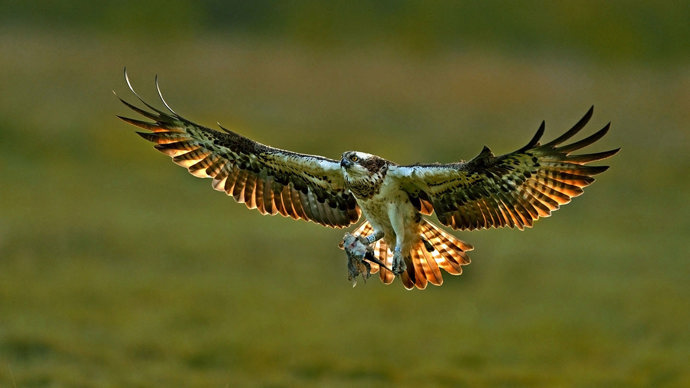
Credit: David Rouse / naturepl.com
Every year, ospreys migrate to West Africa to spend the winter. They can fly over 400 kilometres in one day. They leave in autumn and return to the UK to breed from late March.
They have an average lifespan of nine years but can live much longer, sometimes up to 20 years.
Ospreys are most common in Scotland, having recolonised naturally in the 1950s after being absent since the First World War.
In the 1990s ospreys began breeding at Bassenthwaite Lake in Cumbria and were also introduced to Rutland Water in central England. Pairs have successfully bred at both sites since 2001, and birds fledged from Rutland have also since established nests in Wales.
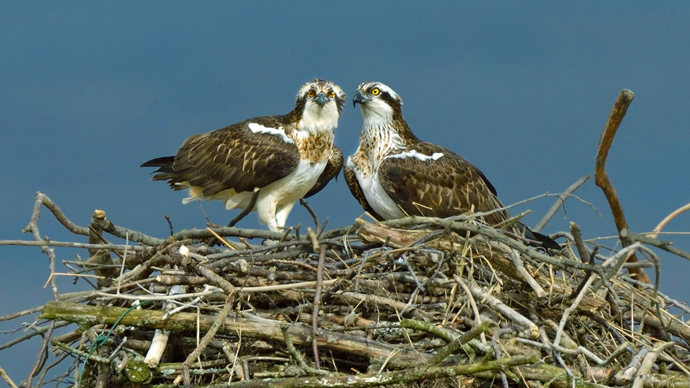
Credit: Andy Rouse / naturepl.com
Almost always found near water, ospreys hunt in freshwater lakes, large rivers, reservoirs and by the coast.
In flight, the long, broad wings are held out from the body at a slightly bent angle forming a wide ‘M’ shape.
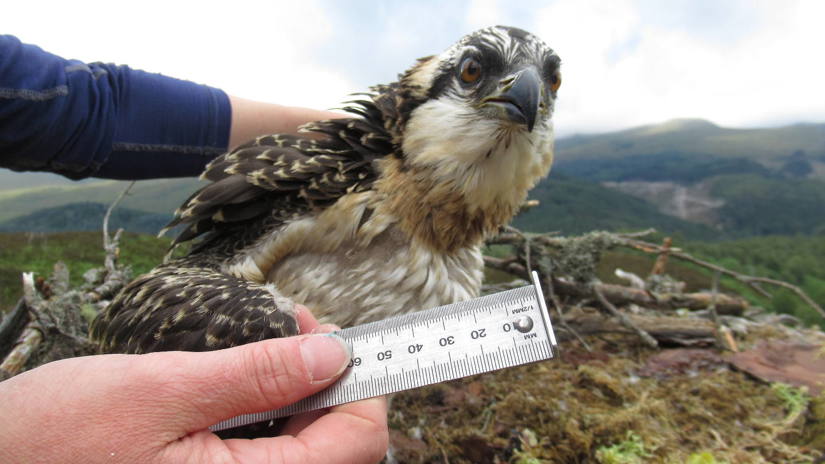
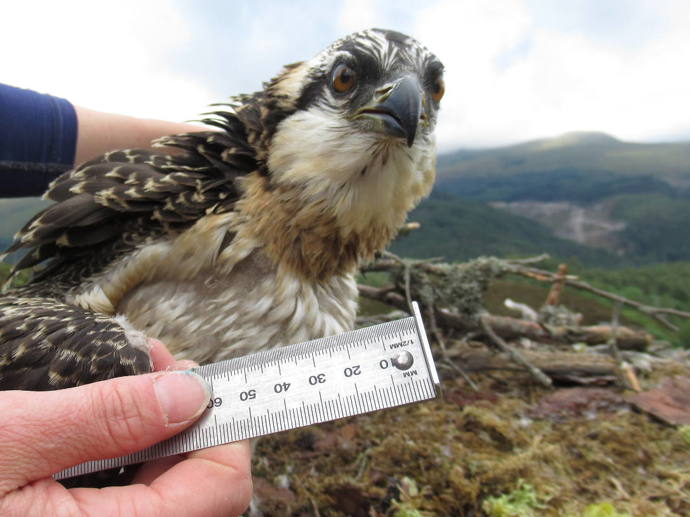
Follow the story of our Loch Arkaig ospreys, live from the heart of an ancient Caledonian pine forest.
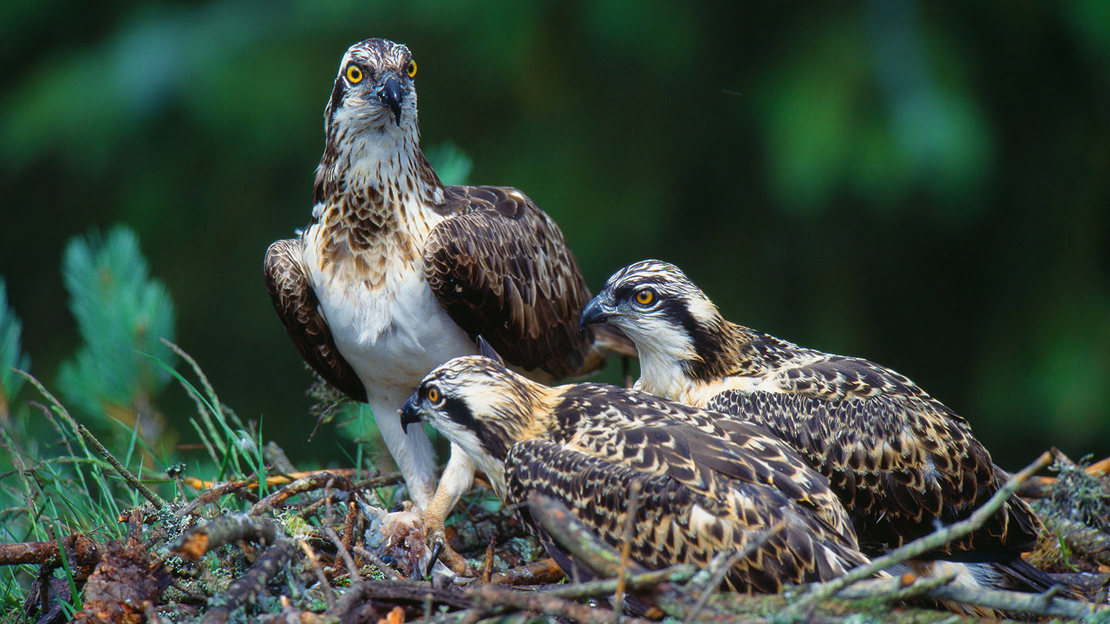
Persecution from gamekeepers and egg collectors pushed ospreys to extinction in the UK in the early 1900s. A combination of legal protection, natural recolonisation, reintroduction projects and the banning of organochlorine pesticides have allowed ospreys to make a comeback.
We’re giving ospreys a helping hand at our flagship Caledonian pine forest at Loch Arkaig, putting up nest platforms to encourage more pairs to breed.

Woodland wildlife is fading before our eyes. Please support our appeal to save rare and threatened species.
Donate now